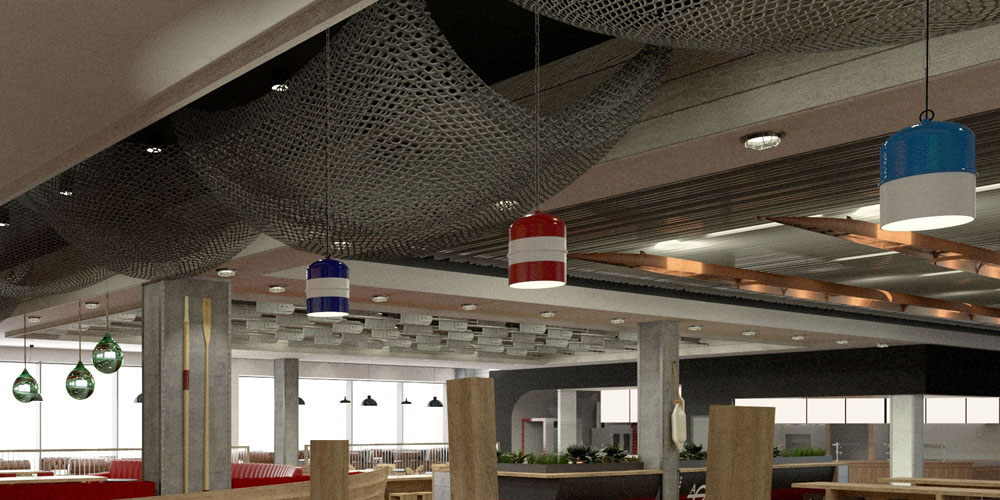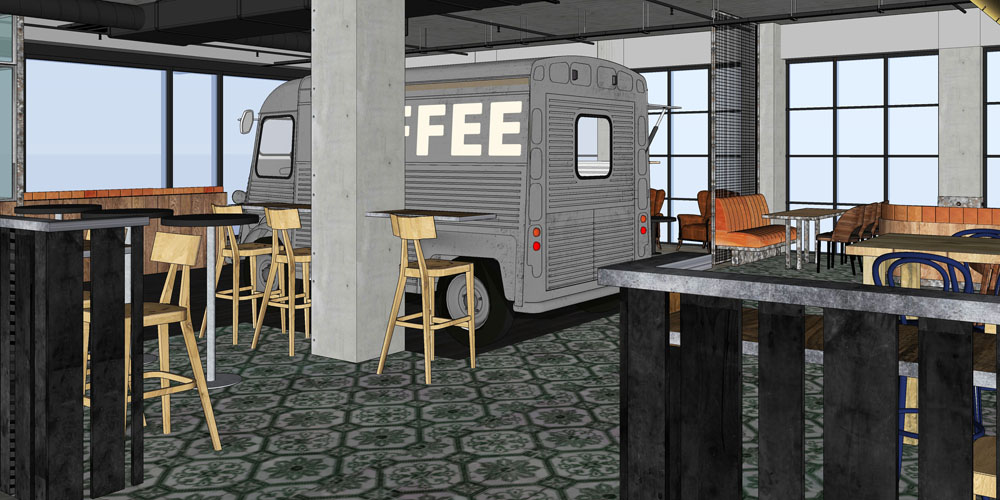Smoke and Mirrors
In previous articles, I contended that how people interact with public space is as much to do with their subliminal, instinctive reaction as it is to the superficially visual – an ongoing conversation with the subconscious, in which the conscious mind plays a lesser and delayed roll.
Yet, as a designer, I have to support the contention that we provide the visual stimulation to support the subconscious reaction. In other words, we can manipulate the signals of warmth and security our psyche craves, but it won’t cut the mustard if it is not visually stimulating. Which brings us to the question of how the human imagination bridges between the conscious and the subconscious and how design can facilitate that connection.
The public domain connecting retail environments is most successful when played as theatre, when it focuses on providing a temporary and aspirational escape from the mundanity of life. When we rise to that interpretation, by layering a ‘stage design’ onto the sense of warmth and security discussed in the previous article, we create the opportunity for engagement at several levels. Customers, largely won over by the warm welcome, can then be further ensnared by a visual impact that engages their conscious minds.

Stimulating the Imagination
Given that adaptation of existing building stock to function more effectively is both the most economic and, usually, the most sustainable approach, enhancement of common areas to create an environment that customers want to use is unquestionably a prudent investment.
When designed appropriately, common area interiors have the capacity to provoke and sustain customer loyalty. Done well, they will engage the imagination with visual cues, variety and delight, encouraging associations and connections that are relevant to the target audience. They will provide a system of non-linguistic navigation aids, so that customer can locate themselves by landmarks and icons (“I’ll meet you by the glowing bananas,” or “… at the parking entrance, next to the sugarloaf wall,”) given that something significant or extraordinary will be far more memorable as a reference point than a colour or a ‘street’ name.
Whilst it is often argued that uniformity (the technical term for ‘monotony’) gives prominence to the retail offer, in an environment where there is little to differentiate the offer from the competition, the transition from ordinary shopping venue to destination, indeed its unique selling point, becomes the experiential.

Placemaking… the real version
Which brings us naturally to the concept of Placemaking, a set of criteria that has been in play for forty years and more. Without question, progressive retail destinations have much to gain from its principles, and not just the PR accruing from use of the name. Placemaking engenders community and is a result of group – or stakeholder – effort and engagement. It is not wholly pre-designed space, but evolves around a vision. And whilst it is about the place it creates rather than the design that delivers it, the hand of the designer can and should provide the language that communicates to and with customers.
All of which underlines the importance of the experiential. Having established a level of welcome and warmth, effective placemaking falls to the development of a language that communicates familiarity, humanity, scale, comfort and culture, and does it with a light touch, even humour. These are visual stimuli that feed the imagination and create the environment for engagement and attachment.
Of course, some features of interior design would involve more invasive work to mitigate. In a well-known mall, this time in Poland, the interior design includes a floor pattern with contrasting strips, perpendicular to the storefronts. The mind’s most likely association with the alternating dark and light stripes is with a staircase, so walking the length of this mall risks provoking the sense of an exhausting climb up a long staircase.
Whether the language is one of materials, graphics, colours, shapes or a theme, the key is in finding a medium through which the result is not static, but, in the context of placemaking, can develop and grow, providing an on-going basis for conversation. As Wilde pointed out, the only thing worse than being talked about is not being talked about.
What an Experience
And so we arrive at the smoke and mirrors of the title. Adapting common areas to speak to customers positively need not be a daunting investment. It need not be about significant replacement of floor finishes and ceilings, nor about branded rest area furniture and expensive play equipment. Given the context, it might just be about introducing a better wall or ceiling colour palette or about overlaying unusual – unexpected, even – textures. A value to bring character and pleasure.
Creating an environment for comfort, subtle and transitory enjoyment, stimulation and the gentle construction of customer loyalty can potentially be achieved by relatively non-invasive methods, focused on the manipulation of customer perception and interwoven into a marketing campaign which highlights the metamorphosis. Why be conventional if the unconventional makes the experience memorable?
